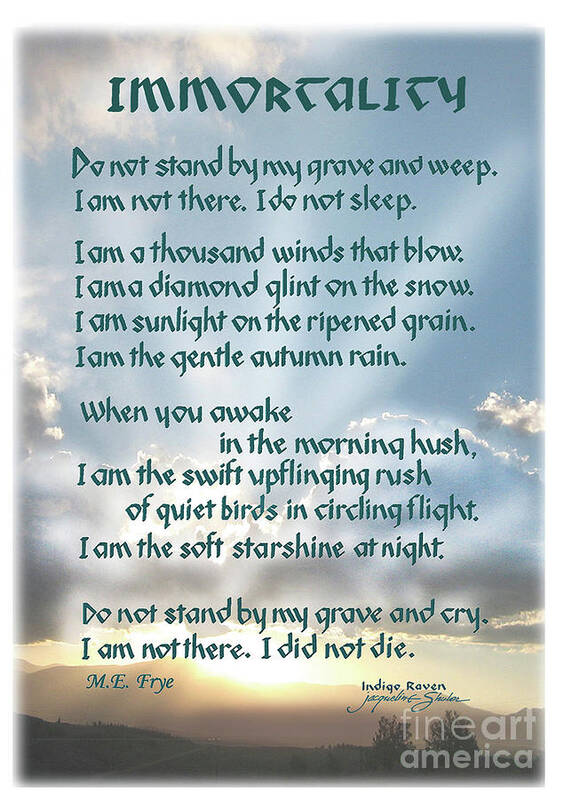
Printable do not stand at my grave and weep poem hanlasem
'Do Not Stand At My Grave And Weep' was outside the scope of the poll, but following a programme about war poems which featured the poem, 30,000 requests for copies descended on the BBC. Subsequently, a book of the poems that had been chosen as the Nation's Favourite Poems was published, and a decision was made to include 'Do Not Stand At My Grave And Weep' in 'prime, first past the post, poll.
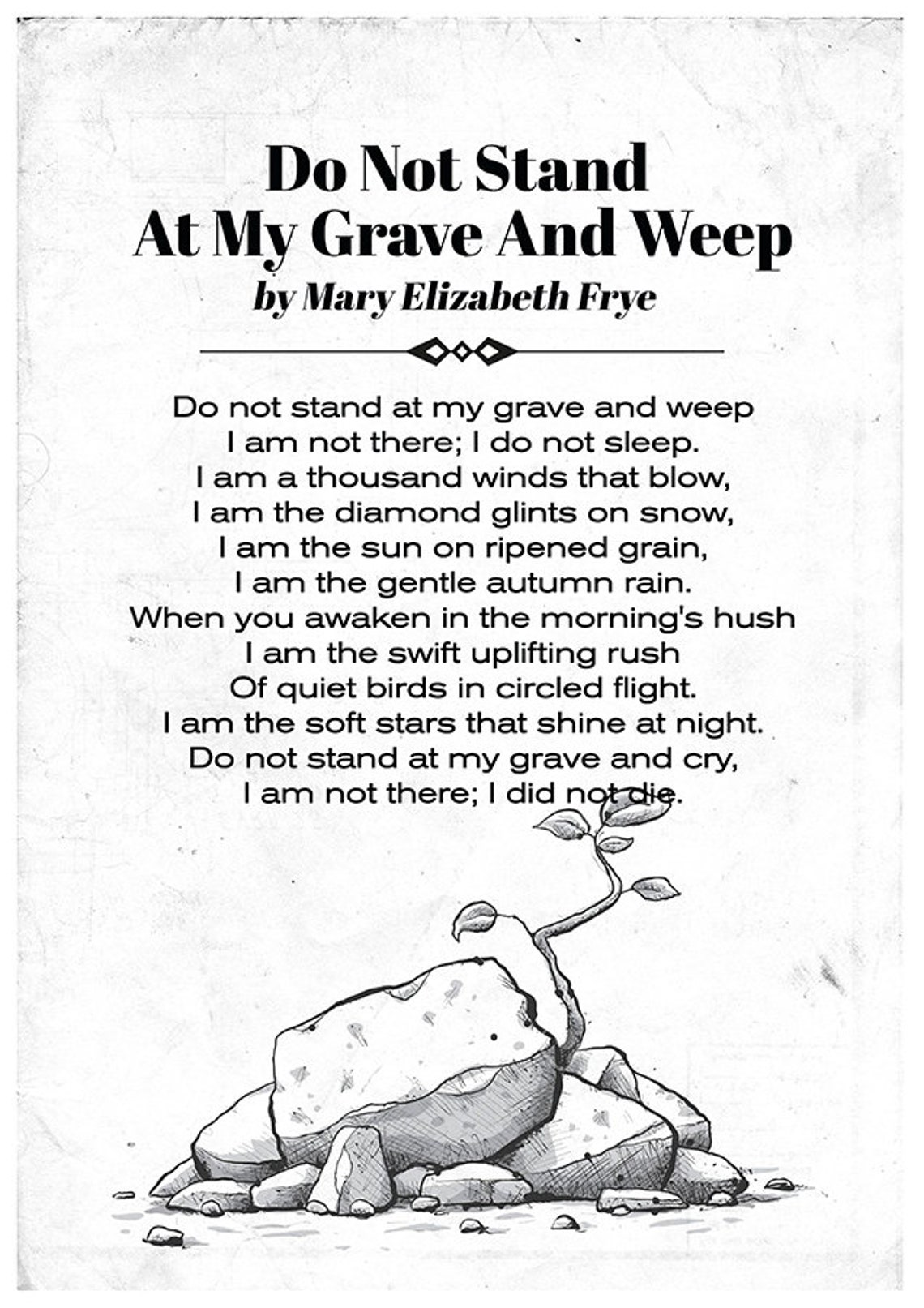
Do not stand at my grave and weep card pohnatural
"Do Not Stand at My Grave and Weep" is a well-known poem, usually recited at funerals. It was written by Mary Elizabeth Frye. Little was known about the author, and it remained a mystery until late in the twentieth century; it was believed that its poet was Mary Elizabeth Frye.

Printable do not stand at my grave and weep poem ascselink
Do Not Weep Mary Frye. Do not stand at my grave and weep, I am not there, I do not sleep. I am a thousand winds that blow. I am the diamond glint on snow. I am the sunlight on ripened grain. I am the gentle autumn rain.
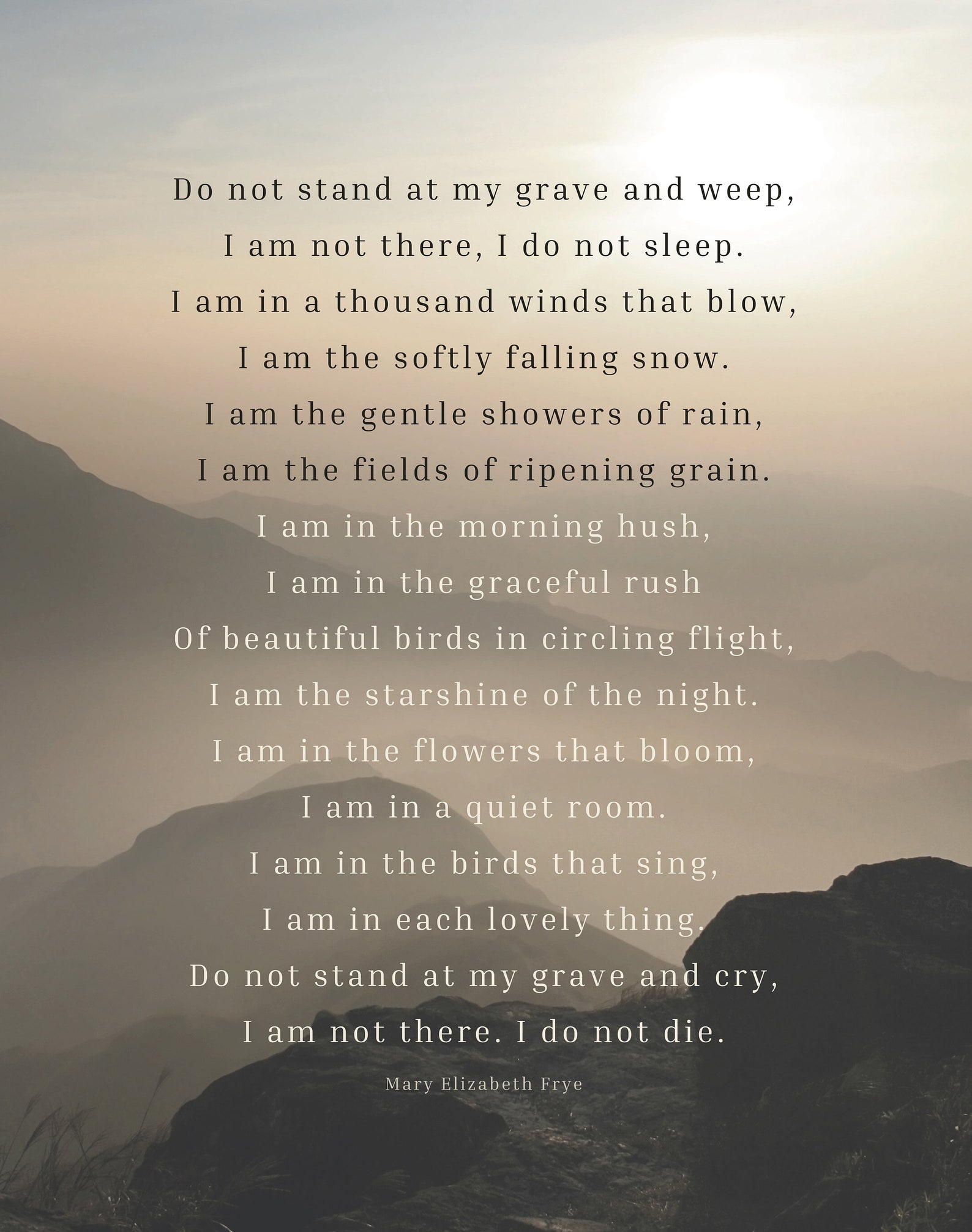
Do Not Stand At My Grave and Weep Instant Download Printable Etsy
Origins Kansas native Clare Harner (1909-1977) first published "Immortality" in the December 1934 issue of poetry magazine The Gypsy. [1] It was written shortly after the sudden death of her brother. Harner's poem quickly gained traction as a eulogy and was read at funerals in Kansas and Missouri.
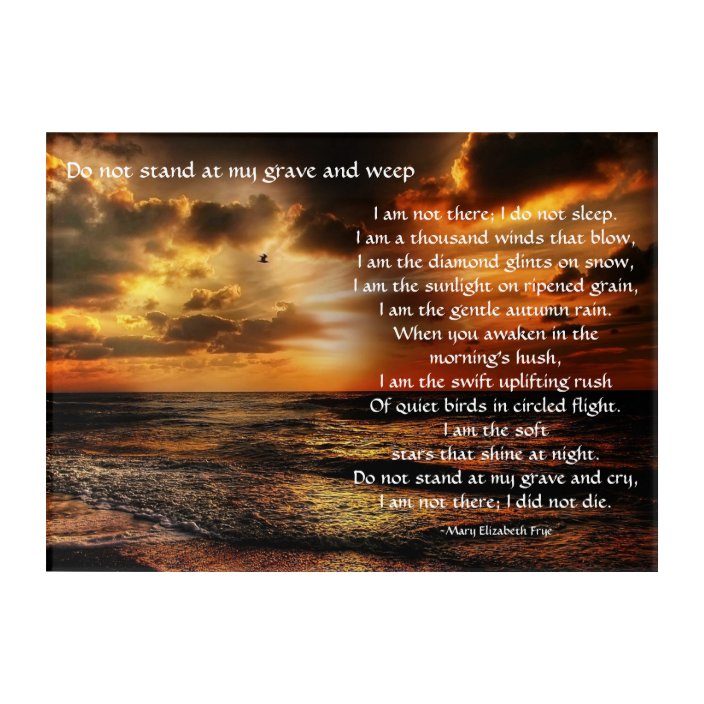
Do Not Stand at My Grave and Weep Poem Acrylic Print
Do Not Stand At My Grave And Weep by Clare Harner - Famous poems, famous poets. - All Poetry Often attributed to Mary Elizabeth Frye, recent research suggests she plagiarized it from Clare Harner. Do Not Stand At My Grave And Weep Do not stand at my grave and weep; I am not there. I do not sleep. I am a thousand winds that blow.

Do Not Stand at My Grave and Weep Poem Mary Elizabeth Frye Etsy Australia
In this video, we delve into the timeless poem "Do Not Stand at My Grave and Weep" by Mary Elizabeth Frye. Through analysis and discussion of its poetic devi.

Pin by Sheila MitchellFavrin on Quotes Pinterest
Do not stand at my grave and weep I am not there. I do not sleep. I am a thousand winds that blow. I am the diamond glints on snow. I am the sunlight on ripened grain. I am the gentle autumn rain. When you awaken in the morning's hush I am the swift uplifting rush Of quiet birds in circled flight. I am the soft stars that shine at night.
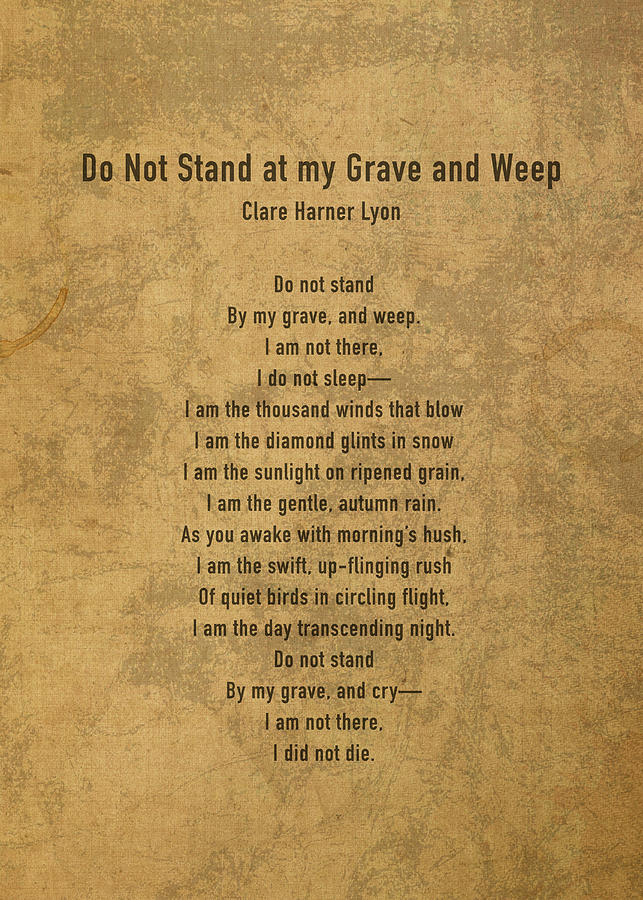
Do Not Stand at My Grave and Weep by Clare Harper Lyon Classic Poem on Parchment Mixed Media by
Do Not Stand at My Grave and Weep Famous bereavement poem written by Mary Elizabeth Frye in the 1930s. It says that the people you love are all around you. Do Not Stand at My Grave and Weep Do not stand at my grave and weep, I am not there, I do not sleep. I am a thousand winds that blow. I am the diamond glint on snow.
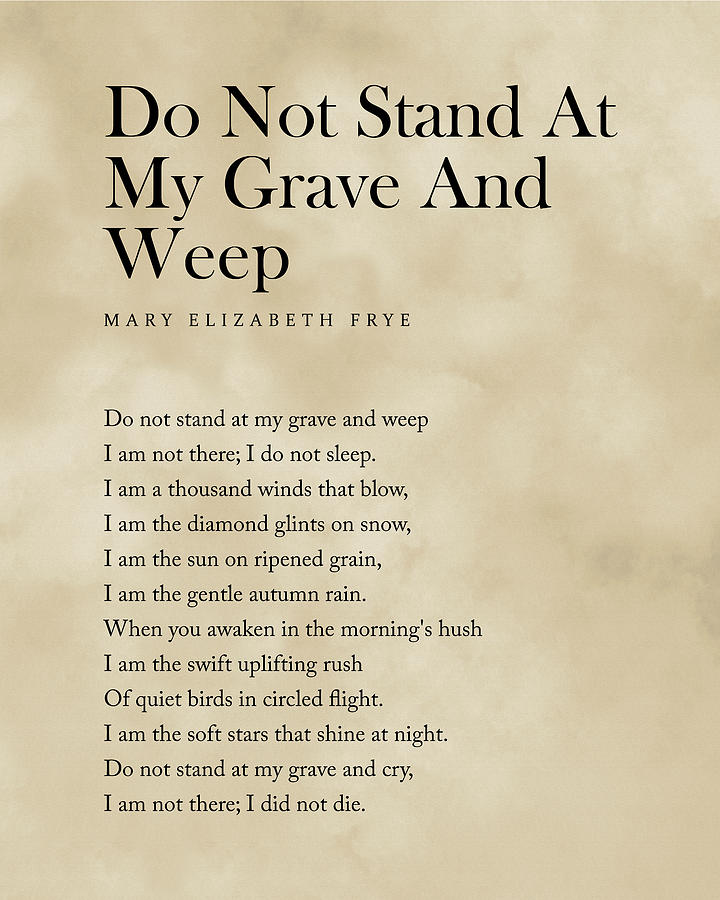
Do Not Stand At My Grave And Weep Mary Elizabeth Frye Poem Literature Typewriter Print 2
Mary Frye is an American poet best known for the piece 'Do Not Stand at My Grave and Weep.' She was born on November 13, 1905 in Dayton. In this touching poem, 'Do Not Stand at My Grave and Weep', by Mary Frye, she speaks of death in a welcoming tone.

Do not stand at my grave and weep sears foryougasw
Do not stand at my grave and weep, I am not there, I do not sleep. I am in a thousand winds that blow, I am the softly falling snow. I am the gentle showers of rain, I am the fields of ripening grain. I am in the morning hush, I am in the graceful rush.
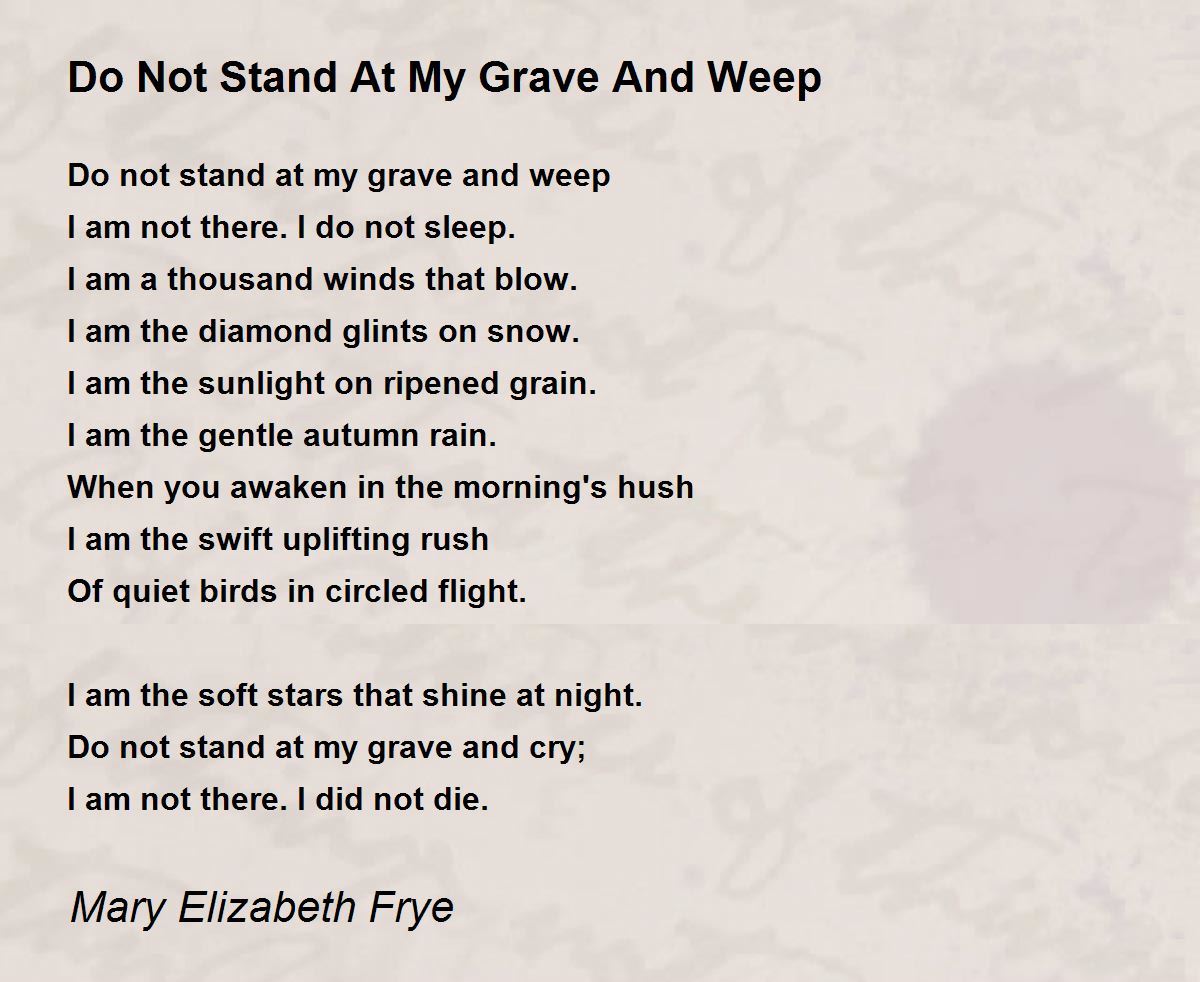
Do Not Stand At My Grave And Weep Poem by Mary Elizabeth Frye Poem Hunter
The world-famous poem "Do not stand at my grave and weep" was wildly attributed to Mary Elizabeth Frye but it's originally penned by Clare Harner Lyon. The o.

Do Not Stand at My Grave and Weep (SATB ) by J.W. Pepper Sheet Music Choir music, Weeping
One of the most popular bereavement poems in English, "Do Not Stand at My Grave and Weep" holds even more allure for its mysterious origins and many reinventions. A traditional, rhyming anti-elegy, the poem uses imagery and metaphor commonly associated with death and rebirth. The poem's voice, a direct address, reaches out to readers in.

"Do not stand at my grave and weep" Mary Elizabeth Frye [1600 x 1200] [OC] Mary elizabeth
5,200+ Quick-Read Plot Summaries. Downloadable PDFs. Subscribe for $3 a Month. " To Autumn " by John Keats (1819) Many overlapping images connect Keats' poem to "Do Not Stand at My Grave and Weep," along with the themes of immortality and transformation. Wind, grain, and especially birds contribute to mood and supply metaphors in both poems.

Do Not Stand At My Grave And Weep im Stretta Noten Shop kaufen
"Do not stand at my grave and weep" is the first line and popular title of this bereavement poem of disputed authorship. This extremely famous poem has been read at countless funerals and public occasions. There are in existence many slightly different versions of the poem.
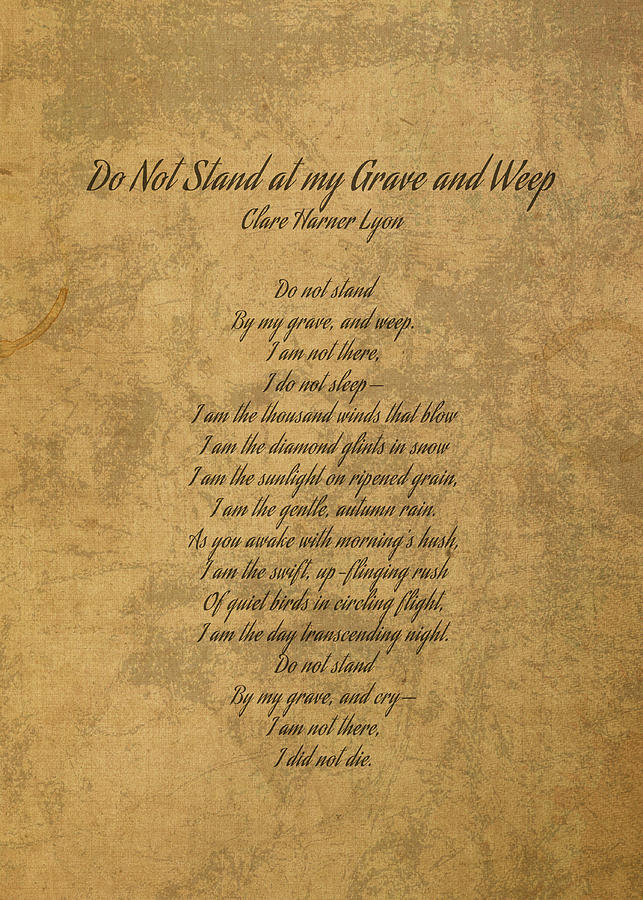
Do Not Stand at My Grave and Weep by Clare Harper Lyon Classic Poem on Parchment Script Mixed
Het oorspronkelijke gedicht. Do not stand at my grave and weep door Mary Elizabeth Frye (1932) Do not stand at my grave and weep, I am not there, I do not sleep. I am in a thousand winds that blow, I am the softly falling snow. I am the gentle showers of rain, I am the fields of ripening grain. I am in the morning hush,
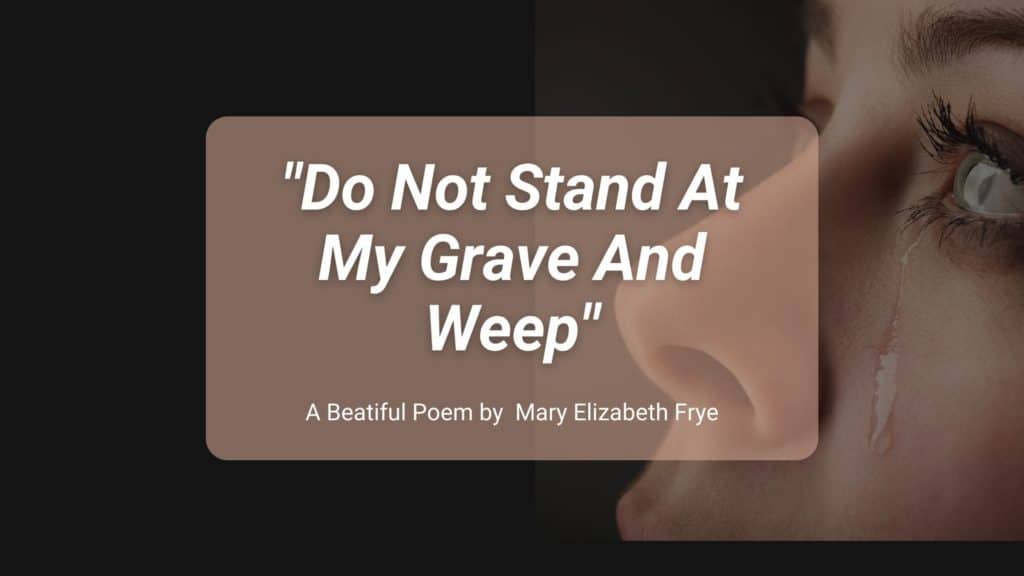
Do Not Stand at My Grave and Weep
5. Lacrymosa - Do not stand at my grave and weep. Lacrymosa, dies illa. That day will be one of weeping . Do not stand at my grave and weep, I am not there, I do not sleep. I am a thousand winds that blow, I am the softly falling snow. I am the gentle showers of rain, I am the fields of ripening grain. I am in the morning hush, I am in the.